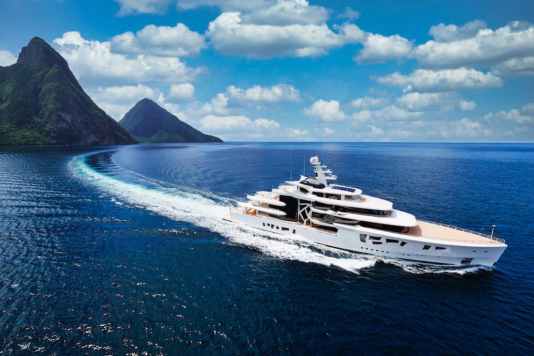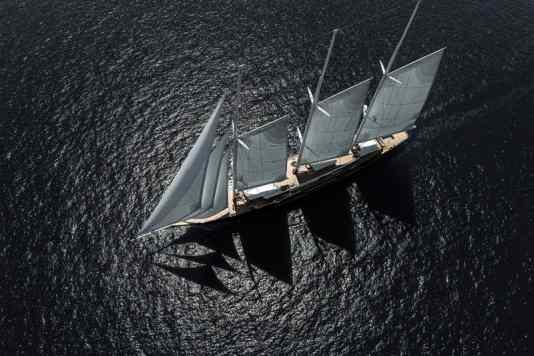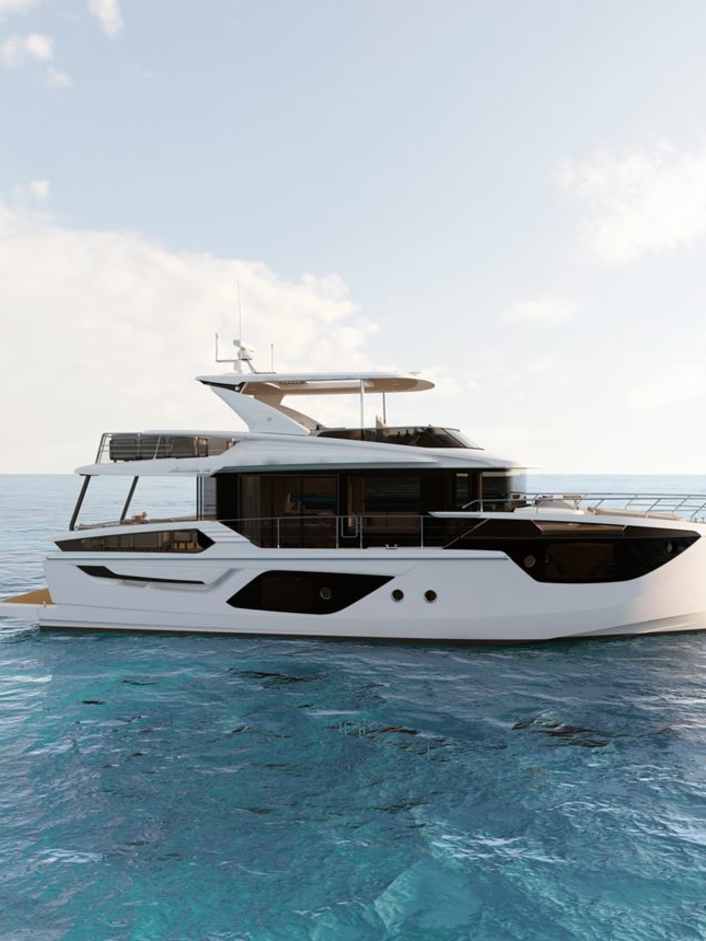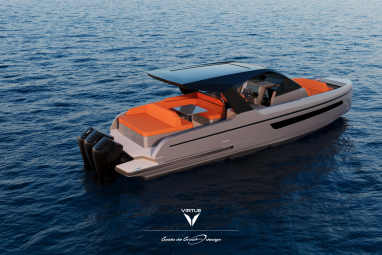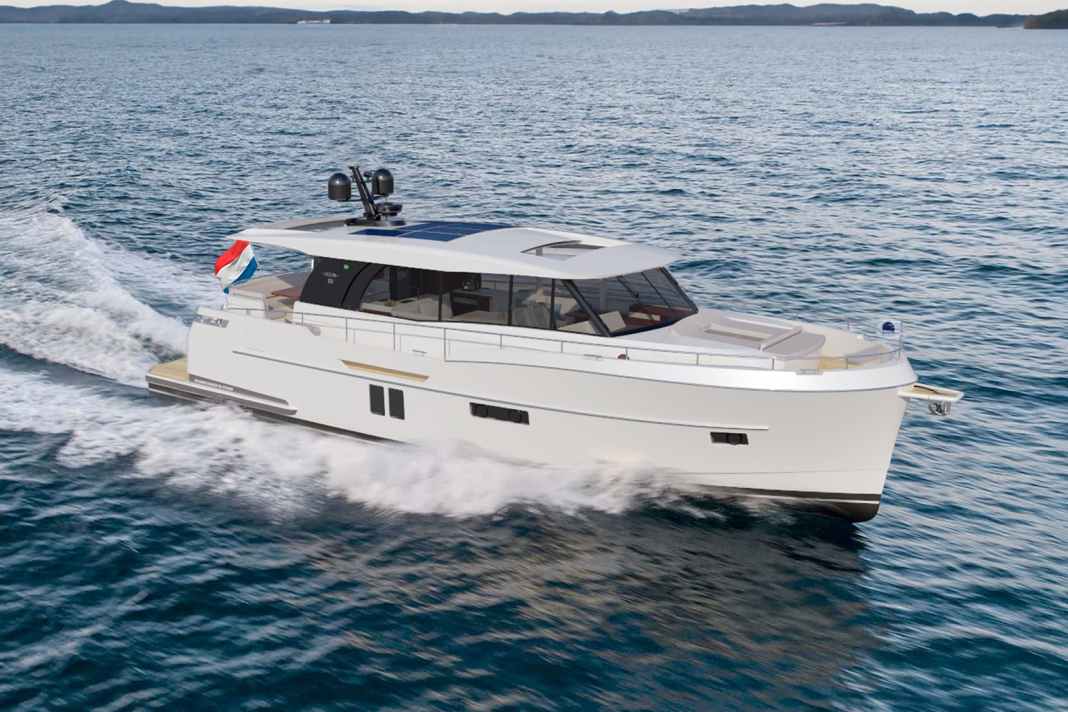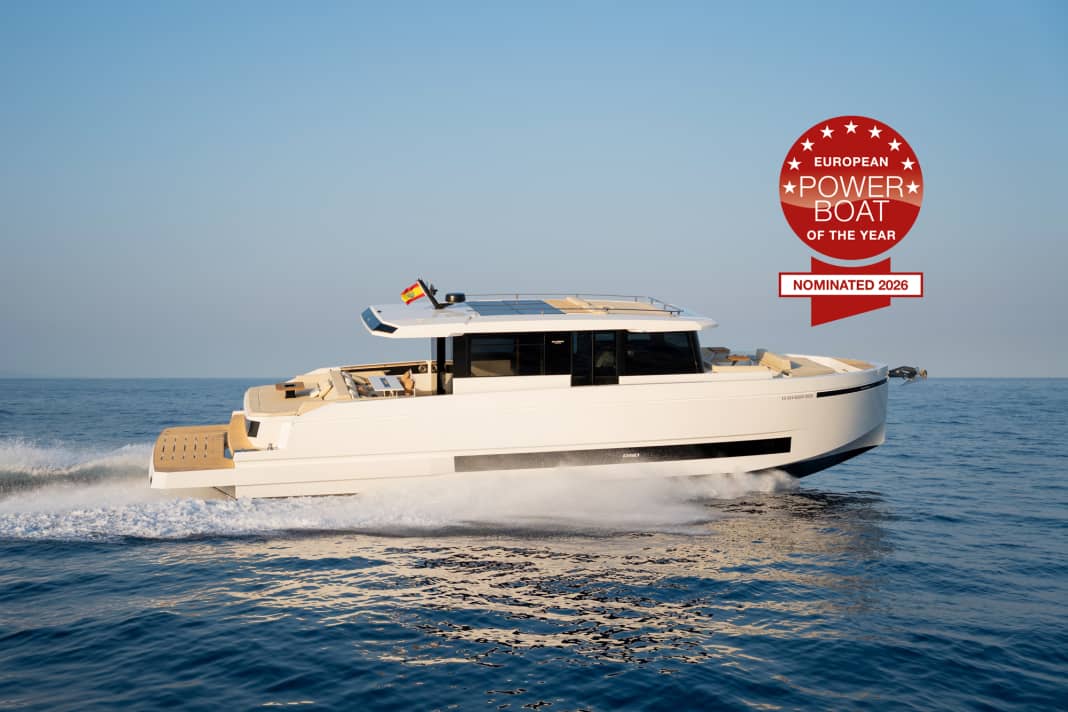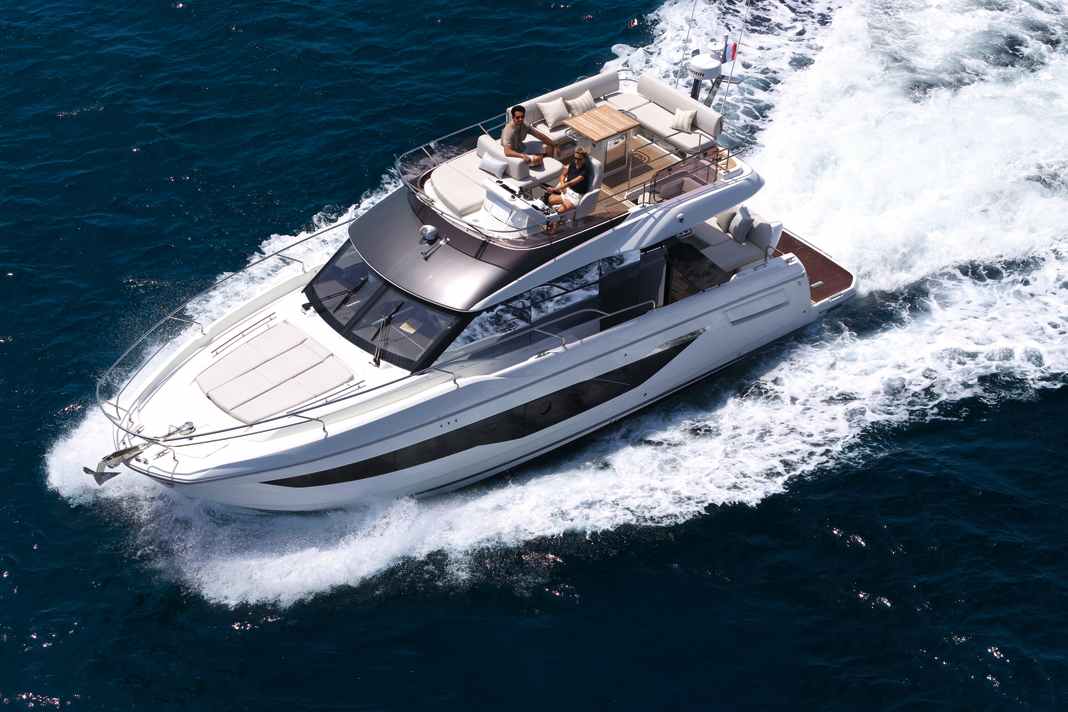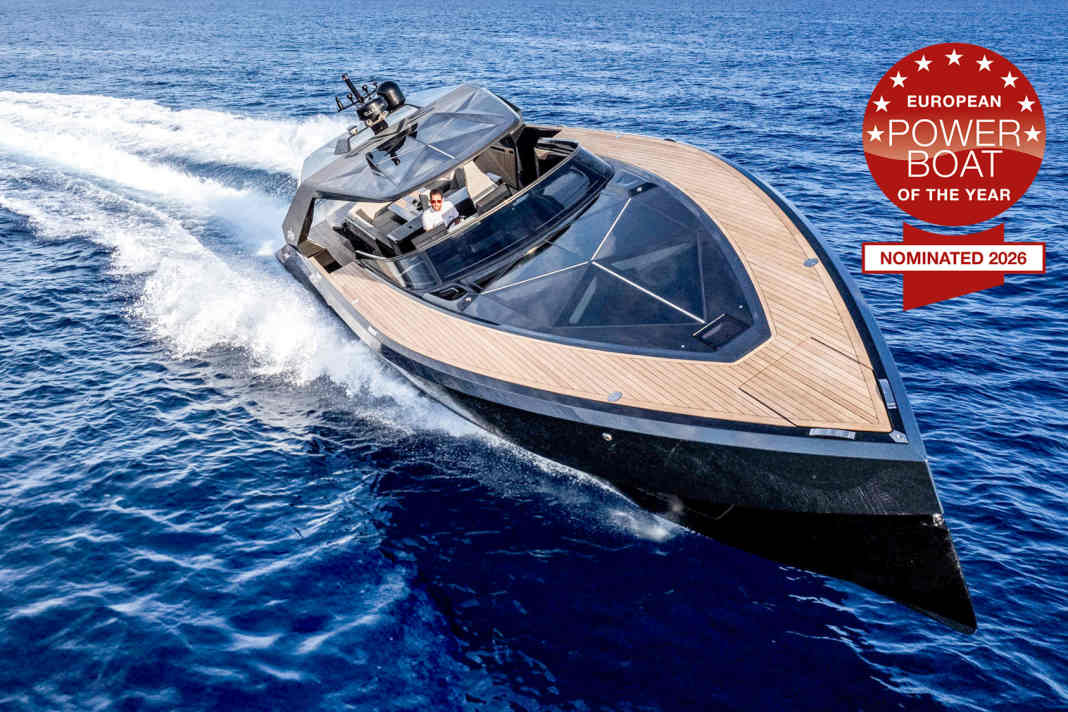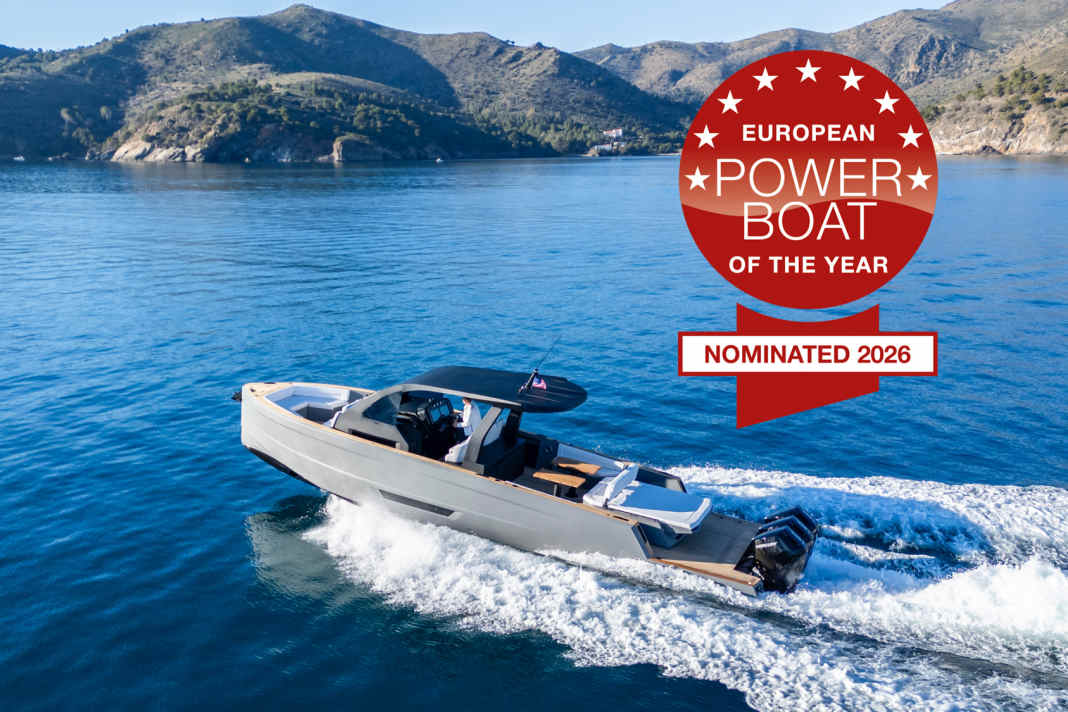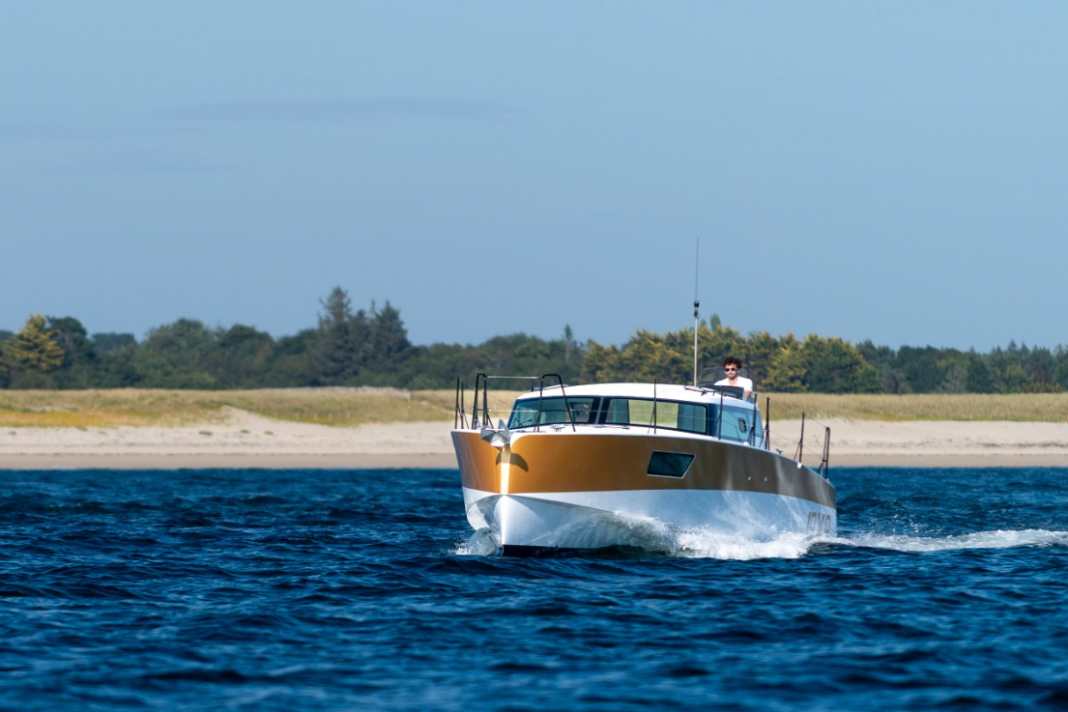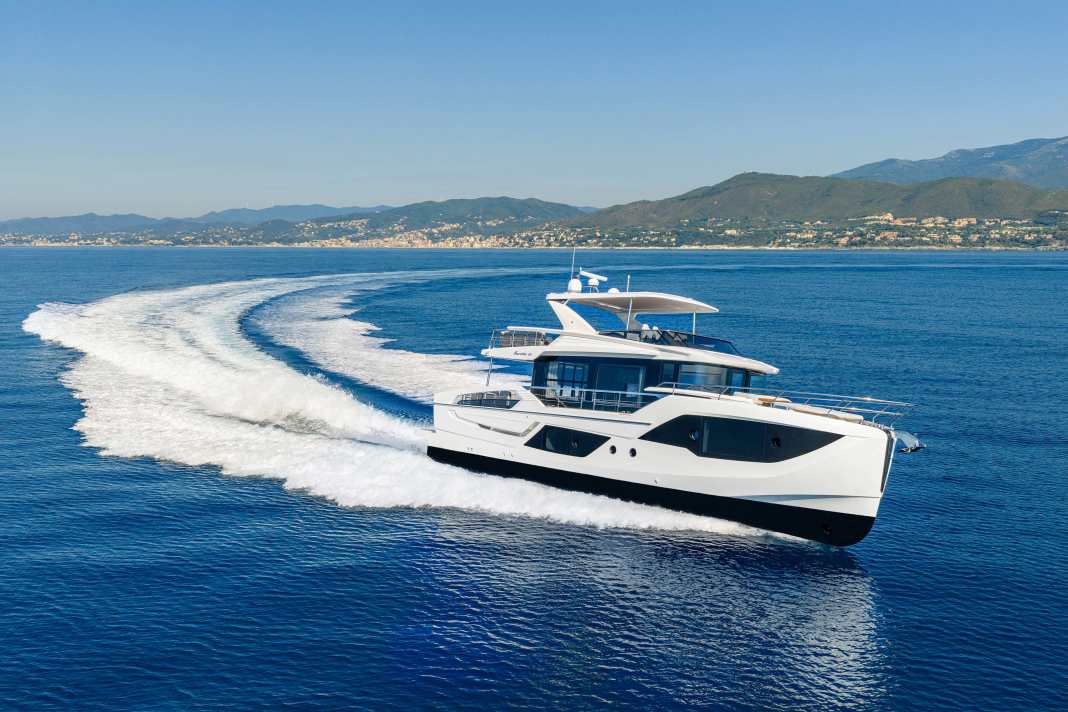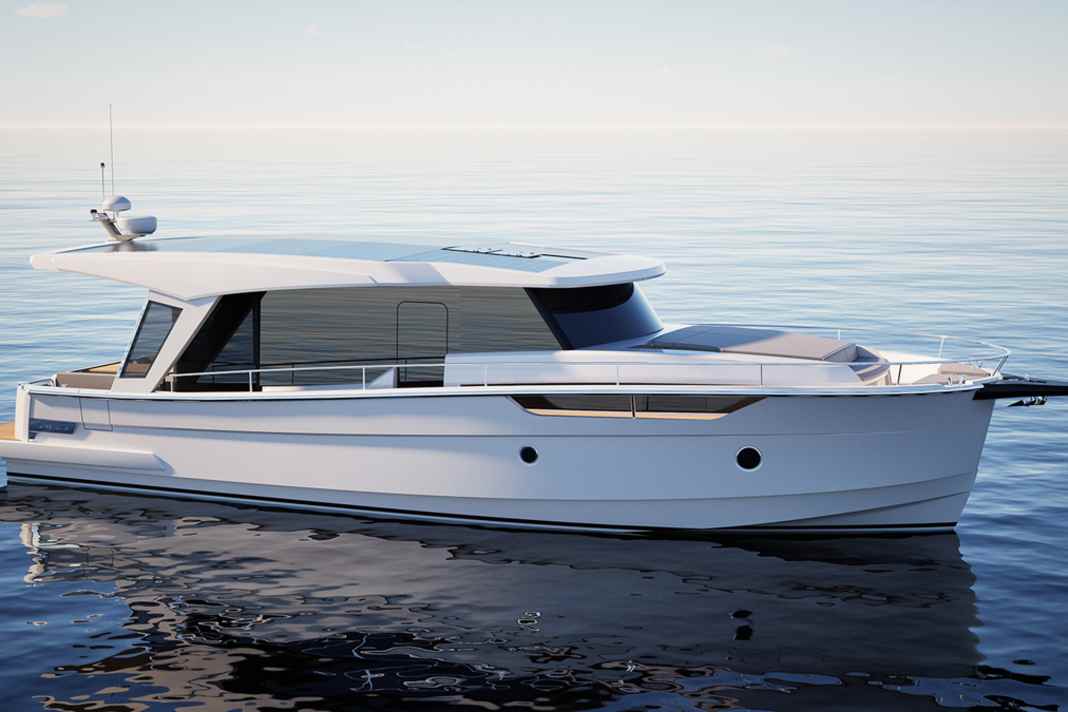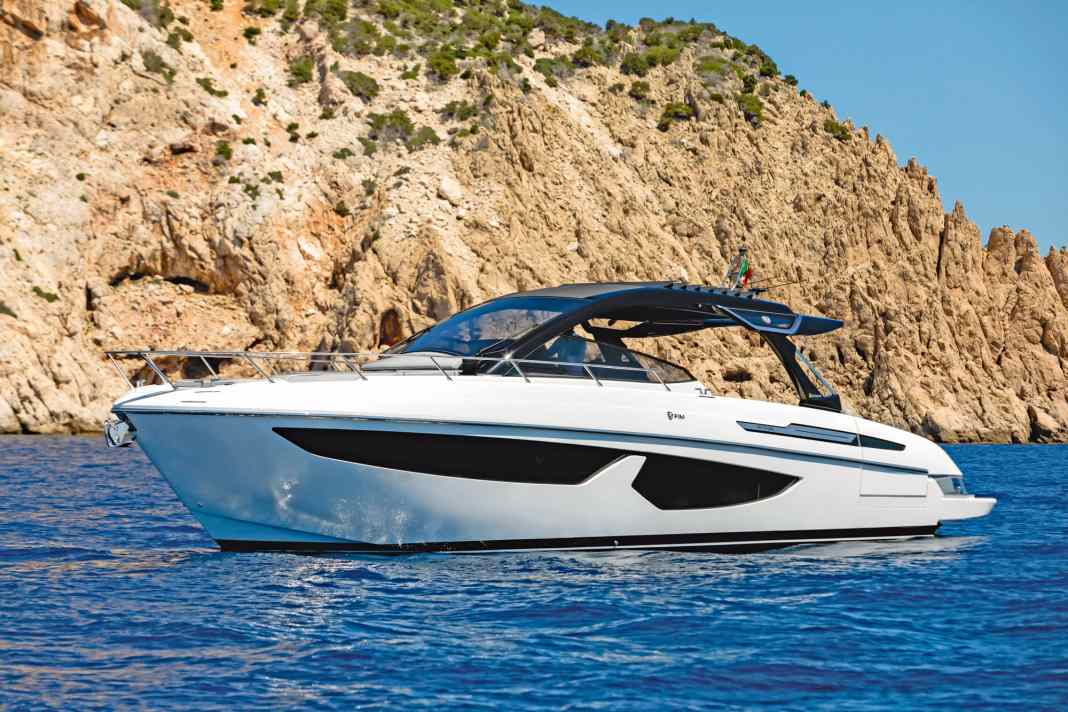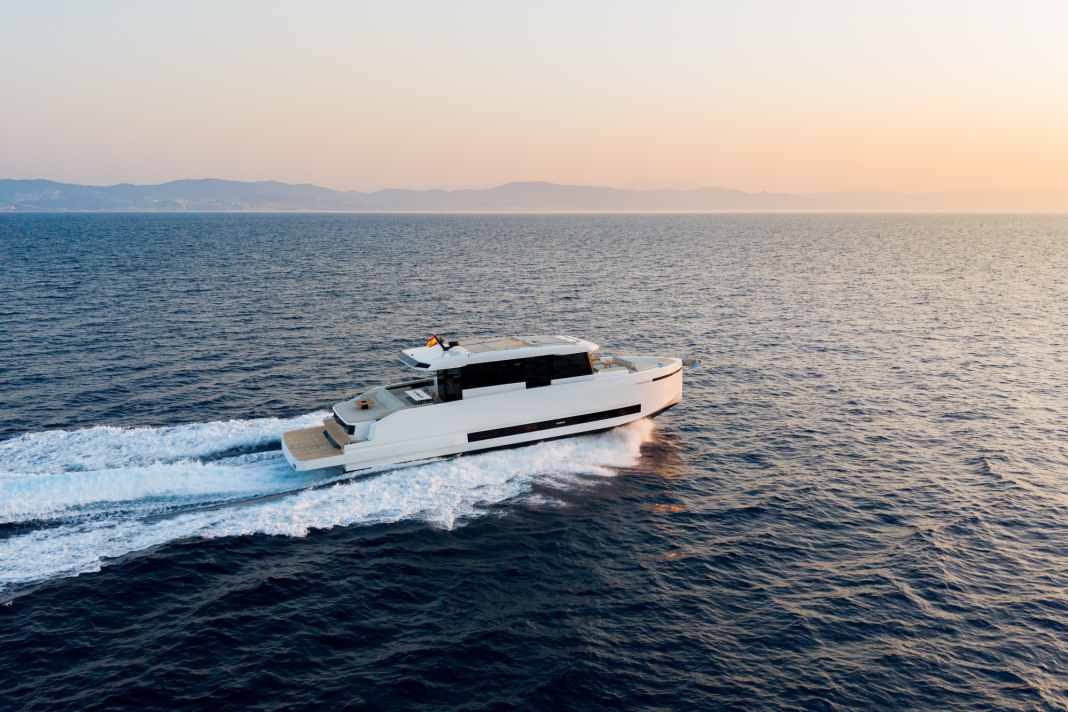Motor yachts: For those who want more
Larger Motorboats continue to enjoy undiminished popularity. And often they are not at all what they are initially associated with - namely exaggerated luxury and opulence. This is because the term motor yacht often simply means a motorboat of a certain size. You also need to take a closer look at CO2 emissions before making a judgement. New builds with modern propulsion systems are often many times more efficient than the engines of older and sometimes smaller boats. Luxury or not, a motor yacht naturally comes at a price and is not affordable for everyone. However, if you would like to spend a day or perhaps even an entire holiday on a motor yacht, you can go on a motor yacht charter. Charter set.
What is a yacht?
There is no fixed definition of what a yacht is - neither in terms of size nor in terms of equipment. However, the 10 metre mark can serve as a rough guide for classification. From this length upwards, it is often referred to as a yacht. And even if there are no fixed equipment features, it is clear that yachts tend to be more upmarket and are primarily intended for recreational and leisure purposes. Overnight accommodation is almost always available.
A distinction is made between motor yachts and sailing yachts, although the type of propulsion is not the only distinguishing feature of these two types of boat. Sailing yachts are more seaworthy than motor yachts, both because of their design and because their range is not limited by their fuel supply.
Superyachts and the super-rich: The best entertainment from a world of superlatives
The superyachts and megayachts that spring to many people's minds when they think of yachts are not at all like the average yacht. The majority of motor yachts on the road are between 10 and 20 metres long.
But of course, the large luxury yachts of the super-rich attract a lot of attention - both in the media and on the water, where, with a bit of luck, they can be spotted and admired.
From a Superyacht The term "mega yacht" is used for boats of around 24 metres or more in length, and "megayacht" for boats of around 80 metres or more. The term gigayacht is also used and refers to yachts of around 100 metres or more. Lengths are also often given in feet: 1 metre corresponds to 3 feet. Russian oligarchs, politicians and members of the royal families of rich oil states and other multi-billionaires compete to see who owns the most expensive, largest and most luxurious yacht. One million per metre is the minimum you have to put down for such floating luxury objects. There are hardly any upper limits and the prices are dizzying - the super-rich can spend up to 700 million euros on their prestigious objects. It goes without saying that they are not produced in series, but only to order.
It is also clear that the owner cannot steer such a huge vessel himself - or at least not alone. Superyachts need a crew to guide and maintain the ship, operate and service the engines and, of course, fulfil the special wishes of the demanding owner and his fellow travellers.
Distinguishing features of motor yachts
However, superyachts do not correspond to the average Boat market but they are exceptions. In reality, most prospective buyers look for much smaller and cheaper models. Nevertheless, a yacht is always a major investment. That's why you should do your research before you buy. Which motor yacht suits your needs, budget and purpose? BOOTE presents the different types and distinguishing features of yachts - so that you can make the right purchase decision!
Glider, displacer or semi-glider
An important distinguishing feature of motor yachts is their hull shape, which, together with the weight and engine power, determines whether a boat is a planing, semi-planing or displacement boat.
Hull speed
To understand the differences between these three types of boat, let us first explain the term hull speed: when a boat is travelling, waves are created at the bow and stern, which combine to form a wave at a certain speed. A boat cannot overtake this wave, no matter how much engine power it has, so its speed is limited. This is known as the hull speed. The longer the hull of the boat, the higher the hull speed.
Displacer
The entire length of the displacement hull is submerged below the water surface during the entire journey. The hull speed is also their maximum speed. They are suitable for longer journeys at medium speed, for higher payloads and for heavier seas. There is no alternative to a displacement hull for all yacht sizes - boats can only be planing up to a certain weight. Ships and larger yachts are therefore always displacement boats.
Glider
Gliders, on the other hand, are built and motorised in such a way that their hull lifts out of the water at a certain speed. The boat then glides above the waterline. The bow and stern waves no longer present any resistance. The motor yacht can thus exceed its hull speed many times over. The prerequisites for planing are a suitable hull shape, low weight and high speed. Whereas in the past only smaller boats could be made to planing, powerful engines and modern designs now make planing possible on motor yachts too.
Semi-glider
Semi-gliders are a hybrid between a displacement boat and a glider. Their hull is built in such a way that at least the front part of the boat lifts out of the water above a certain speed. At least against the resistance of the bow wave, it is no longer necessary to start and the hull speed can be exceeded.
In addition to monohull yachts, there are also twin-hull or tri-hull yachts, i.e. Catamarans or trimarans. Despite all the advantages they offer, they tend to be the exception among private yachts. Catamarans are extremely economical and fast. Thanks to their long, narrow hulls and low weight, they are hard to beat in terms of efficiency.
Yacht types and their purposes
Apart from the hull shape, there are of course other distinguishing features that make motor yachts more or less suitable for certain purposes.
The type of bridge or steering position is one example. Yachts with a so-called flybridge have a second steering position at an elevated location in the open air. In good weather, the yacht can be steered from there. Motor yachts can also differ in terms of the type and height of their superstructures. Depending on the purpose, the decks can be open or closed. The more decks, the more space can be accommodated above deck.
Explorer yachts are in a class of their own. They are suitable for all types of weather and climate, are made of robust materials and are sturdily built. They also have large fuel tanks and efficient propulsion systems, allowing them to cover long distances on the high seas.
The right drive system
In addition to the yacht itself, its Drive a figurehead - and an important distinguishing feature. The measure of all things is less and less performance and speed at any price, but rather efficiency.
Stinking two-stroke engines have long been a thing of the past (at least for new builds). High-tech combustion engines, which are more economical than ever before thanks to smart control elements, as well as electric motors and other pioneering drive systems are making motor yachts ever more efficient. These days, prestige is not only awarded for the longest, most expensive or fastest yacht, but also for the most economical and greenest.
Outboard motor
Whilst Outboard motor In the past, outboard motors were only considered as propulsion systems for smaller boats, but today things are different: technical developments have made it possible to produce so much power in the limited space under the housing cover of outboard motors that even medium-sized yachts can be powered with them. Several outboards are often mounted side by side at the stern, which not only provides more power, but also more driving stability.
Outboards have unbeatable advantages compared to inboard drive types:
- They are easy to maintain: all engine parts are freely accessible under the cover of the housing. The gearbox and propeller can also be reached without having to take the yacht out of the water or use a diver. As outboards are self-draining, winter preservation is also relatively uncomplicated.
- Motor yachts with outboards are steered by swivelling the outboard (in the yacht size range, this is done by remote control and not manually with a tiller). A separate steering system is therefore not necessary.
- As no engine compartment is required on board, there is more storage space for other things.
- Outboards are cheaper, easier to install, lighter and more compact.
For some people, the outboard engines at the rear may also be a status symbol - everyone can see them and therefore knows which engine model is providing the power and speed.
Inboard
Despite all the advantages of outboards Inboard are still a popular alternative and sometimes even the only possible solution - for example when a certain boat size is reached. Outboards only play a subordinate role from a length of 6 metres. An inboard engine can not only generate higher power, but is often much more economical than an outboard, which almost always runs on petrol. An engine concealed below deck has further advantages: Its noise is more muffled, it is not visible (not everyone regards their engine as a status symbol) and it does not protrude into the stern area in a disruptive way. There is also little risk of theft.
Mixed forms and jet propulsion
In addition to the classic inboard with a rigid shaft and outboards, there are other types of drive that can be considered for yachts. For example, inboards are available with different types of power reversal, such as the V-Drive system.
A hybrid form between an outboard and inboard motor is the Z-drive, in which only the motor is on the inside, while the gearbox, rudder and propeller are on the outside. The pod (or IPS) drive and the forward drive system are similar.
The so-called water jet drive (also known as jet propulsion) is rather rare - even though it has great potential, as it propels boats practically loss-free by pumping water through nozzles and thus utilising the recoil principle.
Electric, fuel cell & co.: Alternative drive systems
An increasingly important role is being played not only on the road by Electric motors. Motor boating, which has repeatedly been criticised as polluting, is also set to become greener. However, on the scale of yachts, this cannot be achieved with electric motors alone, as they have their limits in terms of performance and range despite all the progress made. However, combined drive types and fuel cells are increasingly being used.
Performance: How much power does the yacht need?
How much power does a motor yacht need? The answer to this question is not simply a matter of taste. First of all, it is a calculation: the required engine power is calculated from the length of the waterline (in metres) and the weight (in tonnes) of a boat. Of course, many motor yachts are motorised beyond the minimum required. But where is the limit? It goes without saying that yacht and engine must be matched to each other. That's why engines should only be tuned by professionals, if at all. The engine that suits a yacht is therefore usually already predetermined by its design and the purpose for which it is intended. Sometimes, however, there are configuration options and you can order models with more or less engine power.
Power is not the same as speed. How fast a motor yacht is also depends on its design (shape of the hull, length-to-width ratio, weight, etc.), the efficiency of the engine and the other components of the propulsion system. External conditions such as wind, swell and currents also play a role. Some uses are mutually exclusive - very fast yachts are usually not characterised by the best stability at the same time.
Features: Style, materials, design, leisure and recreation facilities
The equipment of yachts usually goes far beyond what is necessary. The furnishings should not only be functional, but also beautiful and of high quality. Shipyards designers get on board so that yachts become total works of art in a uniform style. They are usually furnished in a modern style, but retro-style vessels also find their fans. The hull of yachts is usually made of fibreglass-reinforced plastic (GRP) or aluminium, and a lot of wood is used on deck and for the interior fittings. However, for environmental and climate protection reasons, more and more shipyards are replacing wooden decks, especially the teak deck, with plastics.
The more expensive the yachts, the more extravagant and unusual the facilities are often. From the jacuzzi to the cinema to the beach club (not to mention the helipad or lawn tennis courts), there is nothing that is not available.
However, yachts are often also designed for specific hobbies. There are yachts that are particularly suitable for freshwater fishing, diving or swimming. Sun decks or diving or bathing platforms can be features that are important to certain owners.
Depending on the area of use and intended purpose, sleeping or living areas can take up more space, and outdoor or indoor areas can predominate. Not every yacht is suitable for every body of water - motorisation, stability, equipment, size (length, width, draught) and materials used limit and often determine whether the watercraft is suitable for salt or fresh water, for rivers, lakes, coastal waters or the high seas.
Yacht yards and their portfolio
The market for yacht manufacturers is broadly diversified - just like the portfolio they offer. And before you start looking at well-known shipyards abroad, you should definitely take a look at what Germany has to offer. For example, the long-established Bavaria Yachts company, which has been passionately dedicated to yacht building for 40 years. But Germany is also at the forefront when it comes to superyachts. Some of the largest motor yachts in the world were designed and built at the Lürssen shipyard in Bremen or the Meyer shipyards in Papenburg.
The French are undoubtedly also great yacht builders, having produced two manufacturers, Beneteau and Jeanneau, who are at the forefront of the yacht business worldwide. Jeanneau is now part of the Beneteau Group, which boosts the French company's business even more.
But great yachts are also being built in Italy, Scandinavia and the Netherlands: Ferreti, Riva, Azimut, Van der Valk, Nimbus and Hallberg-Rassy are just a few of the big names responsible for yacht dreams come true.
The Finnish manufacturer Axopar, which produces yachts in the "Adventure" category, has also recently caused a stir. After just ten years, it has become the market leader in its niche - not least because of its unbeatable price-performance ratio.
Which manufacturer is the best?
Which manufacturer and which model should you choose from the large selection? Bavaria Yachts, Jeanneau or the American manufacturer Quicksilver, for example, offer solid, consistent quality and excellent value for money. However, if the focus is less on price and more on extravagance and very special features, then Azimut, Benetti or Ferretti could be the right choice.
What does a yacht cost?
At least it doesn't always have to be a million per metre, as is calculated for the particularly luxurious superyachts. However, you should always reckon with a higher five-figure figure if you want to buy a new motor yacht. Many manufacturers only provide information on costs on request.
You can save a lot of money if you buy a used motor yacht. However, you should inform yourself well and take a close look at the used boat before making a decision. Because even a used yacht is no bargain. Older motor yachts in particular have higher running costs that should be considered: Expenditure on fuel, maintenance and repairs as well as the lack of warranty cover will offset some of the savings on the purchase price.
If buying privately is too risky, you can turn to dealers who buy and sell used yachts. When buying a used yacht from a boat dealer, the likelihood of making a bad purchase or even being cheated is much lower.
News from the world of yachts
To make sure you don't miss anything in the world of yachts, BOOTE regularly presents the latest models, tests and compares them for you, as well as the calibres that you are unlikely to consider buying. Which multi-billionaire has commissioned which project? What are the most extravagant designs and features? Where can you see the yachts of the stars and starlets live?
With BOOTE you are always up to date and can have your say when it comes to yacht types, furnishing styles, prices, equipment features, drive types or the superlatives surrounding yachts.
The fascination of motor yachts
Yachts exert a very special fascination. They polarise. In any case, they attract people's attention.
At BOOTE, the world of yachts becomes very accessible and those interested can find out everything they ever wanted to know about these travelling wellness oases. This is the perfect way to bridge the time until you own your own motor yacht - if you are not already a proud yacht owner!
